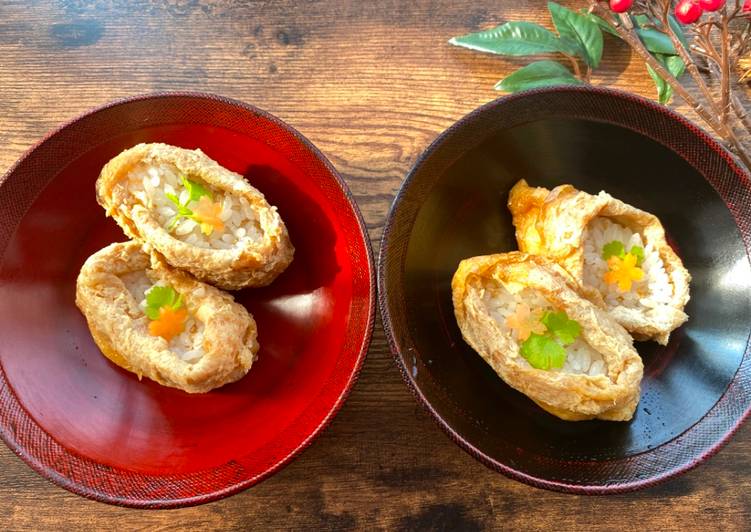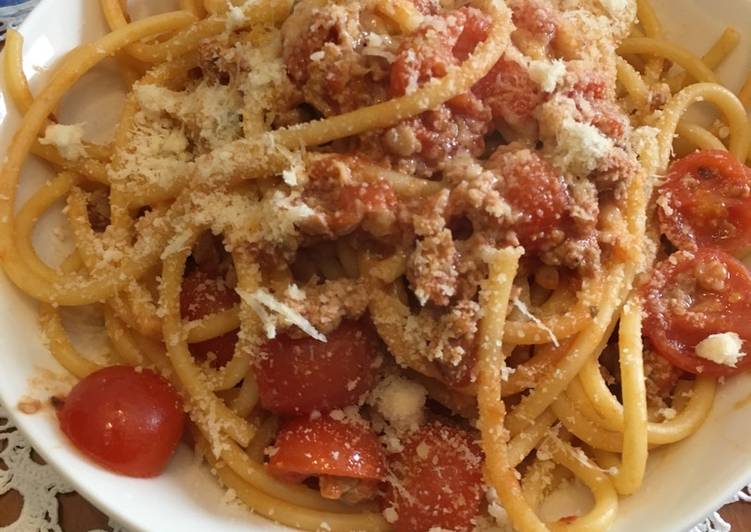
Hello everybody, it is Jim, welcome to our recipe site. Today, we’re going to prepare a special dish, sushi (maki and nigiri). It is one of my favorites food recipes. For mine, I am going to make it a little bit unique. This is gonna smell and look delicious.
Sushi (Maki and Nigiri) is one of the most popular of current trending meals on earth. It’s appreciated by millions daily. It’s simple, it is fast, it tastes delicious. They’re nice and they look wonderful. Sushi (Maki and Nigiri) is something that I’ve loved my entire life.
Nigiri sushi isn't rolled like maki. Instead, a thin slice of raw or cooked fish is layered atop a mound of vinegary rice. Typically, a small amount of wasabi is placed between the fish and the rice, though in some case, a small strip of toasted seaweed, or nori, may be used instead. Both nigiri and maki have these two components, so they are included in sushi.
To begin with this particular recipe, we must first prepare a few components. You can cook sushi (maki and nigiri) using 12 ingredients and 7 steps. Here is how you can achieve it.
The ingredients needed to make Sushi (Maki and Nigiri):
- Take 2 cups sushi rice
- Take 2 tbsp vinegar
- Make ready 1 tbsp mirin
- Get Pinch salt
- Get sheets Nori
- Take Salmon (MUST BE CAUGHT THE SAME DAY IT IS EATEN AS IT IS RAW)
- Prepare Prawns
- Get Tinned tuna
- Prepare Curly parsley
- Prepare Cucumber
- Prepare Avocado
- Prepare Pepper
They sometimes have seaweed, but most of the time it is just fish and rice. Nigiri sushi is known for its profound taste and the focus that it puts on the fish. Many people enjoy going out for sushi, but very few of us have an understanding of the vast array of items on the menu at a Japanese restaurant. The world of sushi can be an intimidating one, with words like sashimi, nigiri, and maki.
Instructions to make Sushi (Maki and Nigiri):
- Prepare the 2 cups of rice with 2 3/4 cups water. Cook for twenty minutes or until all is absorbed and transfer to a bowl to cool. Whilst it is still hot, add the vinegar, salt and mirin, and combine with a wooden paddle.
- Cut up the avocado, pepper, salmon and cucumber. Butterfly the prawns and shred the tuna.
- Once the rice is room temperature, choose which type of sushi to make first.
- NIGIRI: Wet your hands and do not dry. The rice will stick otherwise. Make a small sausage with your thumbs using the rice, and then lay a piece of shrimp or salmon on top and shape again, pressing into your palm. Wrap a thin piece of nori around the Nigiri and it is ready to serve.
- MAKI: Prepare the bamboo roller by covering it with a piece of cling film. Add a sheet of nori, making sure the shorter side is facing the shorter end of the roller. Lay a thin layer of rice on 3/4 of the nori, and then add the peppers, cucumber and salmon on the end with the rice. Roll the Maki carefully, making sure to tuck in the nori as you roll so it stays tight. Roll it up tight and put in the fridge for fifteen minutes. Repeat for the tuna maki, using tuna, pepper, cucumber and avocado.
- Using a very sharp knife, slice the maki to make small but thick makis. Use any leftover fish to serve as sashimi.
- Serve with soya sauce, wasabi and pickled ginger. I also had haddock on the side. Enjoy!
Many people enjoy going out for sushi, but very few of us have an understanding of the vast array of items on the menu at a Japanese restaurant. The world of sushi can be an intimidating one, with words like sashimi, nigiri, and maki. So, in this article we explain the difference between sushi and sashimi. And, we also learn more about two popular types of sushi — nigiri and maki. Like maki, nigiri is another type of sushi.
So that’s going to wrap this up for this exceptional food sushi (maki and nigiri) recipe. Thanks so much for your time. I am confident that you will make this at home. There’s gonna be interesting food at home recipes coming up. Remember to save this page on your browser, and share it to your family, friends and colleague. Thanks again for reading. Go on get cooking!

